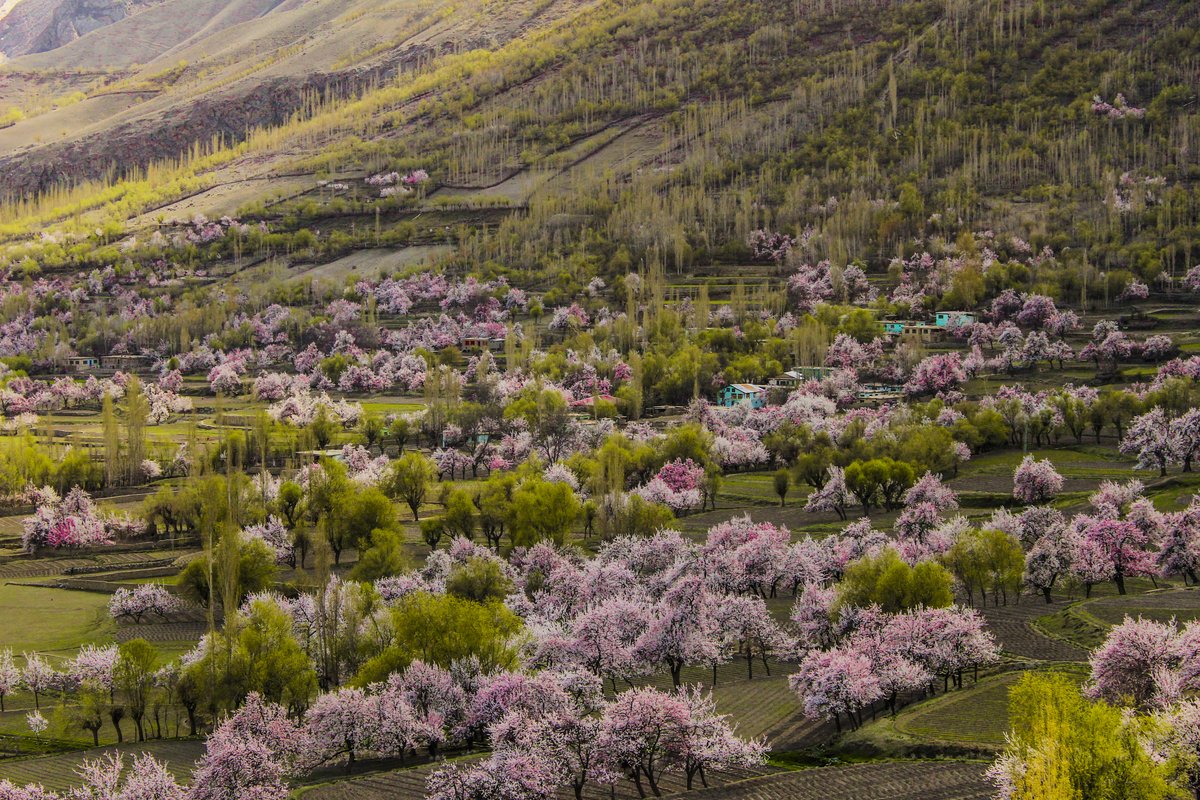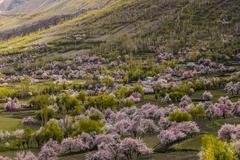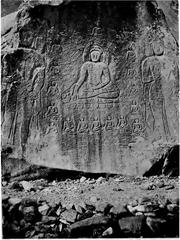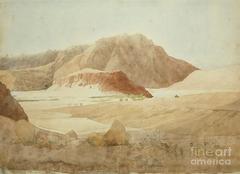
Chunda Valley Visiting Hours, Tickets, and Comprehensive Travel Guide to Gilgit-Baltistan Historical Sites
Date: 14/06/2025
Introduction to Chunda Valley and Its Cultural Significance
Chunda Valley, perched on a scenic plateau just a short drive from Skardu in the heart of Gilgit-Baltistan, Pakistan, is a destination where breathtaking natural beauty converges with rich history and vibrant cultural traditions. Elevated at approximately 2,500–2,800 meters, the valley offers sweeping views of the Karakoram and Himalayan ranges, framing peaks such as K2 and Masherbrum. Its location along ancient trade routes has woven together Central Asian, Tibetan, Persian, and Kashmiri influences, deeply reflected in its architecture, language, and annual festivals.
A visit to Chunda Valley is a chance to immerse yourself in Balti culture, characterized by a unique blend of Buddhist and Islamic heritage. The valley’s hospitable communities, traditional stone and wood houses, and celebrated Cherry Blossom Festival all provide authentic insights into the spiritual and social fabric of the region. The valley is accessible throughout the year, with optimal visiting hours from 8:00 AM to 6:00 PM, and there are no entry fees, making it an inviting and affordable experience for travelers.
For the latest travel advisories and cultural information, consult resources like the Gilgit-Baltistan Tourism Department and the Skardu Tourism Board.
Table of Contents
- Introduction
- Historical Background of Chunda Valley
- Cultural Significance and Traditions
- Architectural Heritage
- Religious and Spiritual Life
- Social Structure and Community Life
- Festivals and Seasonal Celebrations
- Historical Sites and Points of Interest
- How to Reach Chunda Valley
- Visiting Hours, Tickets, and Accessibility
- Practical Travel Tips
- Photographic Spots and Special Events
- FAQ
- Conclusion and Call to Action
Historical Background of Chunda Valley
Chunda Valley’s rich history is shaped by its strategic position on the crossroads of ancient trading routes linking Central Asia, Kashmir, and the Indian subcontinent. Historically, it was part of Baltistan under the Maqpon dynasty (15th–19th centuries), fostering a blend of Tibetan, Persian, and Central Asian influences. The 19th century saw incursions from Sikh and Dogra forces, leaving architectural and cultural imprints that remain visible today. Neighboring Skardu, a former administrative and military hub, underscores the valley’s historical importance (Gilgit-Baltistan Tourism Department).
Cultural Significance and Traditions
The valley’s cultural mosaic is shaped by centuries of exchange between Tibetan, Balti, and Kashmiri peoples. The predominant Balti community speaks a Tibetan dialect enriched with Persian and Urdu, and their customs reflect both Buddhist heritage and Islamic traditions. The Cherry Blossom Festival (March–April) is a highlight, transforming the valley with vibrant blooms and community celebrations featuring music, dance, and local cuisine.
Handicrafts—such as woven carpets, woolen shawls, and intricate woodwork—remain vital to Chunda’s identity and economy, preserving ancestral skills while supporting local livelihoods.
Architectural Heritage
Chunda Valley’s architecture tells the story of its diverse influences. Traditional Balti homes, constructed from stone and wood, boast thick walls and flat roofs, suited to the harsh climate. Notable nearby sites include Skardu Fort (Kharpocho Fort) and Shigar Fort, exemplifying a fusion of Tibetan and Mughal styles with ornate wooden balconies and defensive ramparts, all testament to the region’s layered past (Skardu Tourism Board).
Religious and Spiritual Life
Sufi Islam, particularly the Nurbakhshi order, defines much of the valley’s spiritual landscape. Mosques and khanqahs (Sufi lodges) are community focal points, and festivals such as Eid, Shab-e-Barat, and Urs (Sufi saint commemorations) are celebrated with communal prayers, feasts, and charity. Buddhist rock carvings and petroglyphs in the area offer glimpses into pre-Islamic spiritual heritage and attract archaeologists and history enthusiasts alike.
Social Structure and Community Life
Community cohesion is strong in Chunda Valley, with extended families often living together and local jirgas (councils) guiding communal decisions. Hospitality is a hallmark, with visitors frequently invited to share meals and traditions. Education is improving, with schools teaching Balti, Urdu, and English. Women play an active role in agriculture and traditional crafts.
Festivals and Seasonal Celebrations
Seasonal festivals are central to life in Chunda Valley. Besides the Cherry Blossom Festival, the harvest festival “Losar” marks the agricultural year with rituals and traditional foods, such as apricot jam, barley bread, and yak butter tea. Weddings and religious holidays are lively affairs with music, dance, and feasting.
Historical Sites and Points of Interest
- Chunda Valley Village: Traditional Balti architecture and terraced fields.
- Skardu Fort (Kharpocho Fort): 16th-century fort with panoramic views and historical significance.
- Shigar Fort: Restored palace-fortress, now a heritage hotel and museum.
- Katpana Desert: Unique cold desert with sand dunes.
- Local Mosques and Khanqahs: Centers of spiritual and communal life.
How to Reach Chunda Valley
Arrive via Skardu Airport, which has regular flights from Islamabad (Lonely Planet). From Skardu, Chunda Valley is a one-hour drive accessible by car, jeep, or taxi. Local tour operators offer packages that include transportation, guides, and cultural experiences (skardu.pk).
Visiting Hours, Tickets, and Accessibility
- Visiting Hours: 8:00 AM to 6:00 PM (optimal for sightseeing and safety).
- Tickets: No entry fee for the valley; nominal charges may apply for historical sites like Skardu and Shigar Forts (PKR 100–500).
- Accessibility: The valley is open year-round, but spring and summer are best for travel. Some terrain may be challenging in winter due to snow and ice.
Practical Travel Tips
- Best Times: March–April (blossoms); June–September (pleasant weather, trekking).
- Transport: A 4x4 vehicle is recommended due to rugged roads; local drivers are familiar with the terrain.
- Guided Tours: Enhance your experience with local guides for cultural insights.
- Cultural Etiquette: Dress modestly, ask before photographing people or sacred sites.
- Health: Acclimate to the altitude, carry essential medications, and bring cash as ATMs are limited.
Photographic Spots and Special Events
Chunda Valley is a photographer’s paradise—especially during the Cherry Blossom Festival, in the Katpana Desert, and from the vantage points of Skardu Fort. Look out for special events and festivals by checking with local tourism offices.
Top Natural Attractions
- Chunda Lake: Popular for picnicking, fishing, and boating; surrounded by pine forests (TheTravelTute).
- Duksa Meadows: Wildflower-filled grasslands ideal for hiking and camping.
- Maltoro Bridge: Offers panoramic valley views and a unique walking experience.
- Basho Valley: Meadows and waterfalls nearby (TheTravelTute).
- Sarfaranga Cold Desert: Adventure sports and sand dunes (TheTravelTute).
Accommodation and Dining
- Guesthouses & Homestays: Local family-run options offer authentic Balti hospitality and meals made from organic, locally grown produce (BookerPK).
- Resorts: A few boutique options with modern amenities and panoramic views.
- Cuisine: Try Balti dishes like mamtu (dumplings), balay (noodle soup), and apricot-based desserts (NeelumValleyKashmir).
Local Customs, Responsible Tourism, and Safety
- Dress modestly and respect local traditions.
- Minimize waste and protect the pristine environment.
- Ask permission before photographing locals or participating in ceremonies.
- Altitude awareness: Acclimatize in Skardu before heading to higher elevations.
Frequently Asked Questions (FAQ)
Q: What are the visiting hours for Chunda Valley?
A: The valley is best visited between 8:00 AM and 6:00 PM.
Q: Are there any tickets or entry fees?
A: No, there are no entry fees for Chunda Valley itself, but nearby historical sites may charge nominal fees.
Q: How do I get to Chunda Valley?
A: Fly to Skardu, then take a car or jeep for a one-hour drive to the valley.
Q: Are guided tours available?
A: Yes, local guides and operators offer cultural and trekking tours.
Q: When is the best time to visit?
A: March–April for cherry blossoms, June–September for trekking and sightseeing.
Q: What should I pack?
A: Layered clothing, hiking boots, sun protection, reusable water bottle, and a camera.
Q: What historical sites are nearby?
A: Skardu Fort, Shigar Fort, Deosai National Park, and the Skardu Bazaar.
Visuals and Interactive Maps
- Photos: Cherry blossoms, Chunda Lake, traditional Balti homes, Skardu Fort, and Maltoro Bridge.
- Map: View map of Chunda Valley and Skardu region
- Alt tags for images: e.g., “Chunda Valley panoramic view,” “Cherry blossoms in Chunda Valley,” “Maltoro Bridge over Chunda Valley.”
Conclusion and Recommendations
Chunda Valley is a hidden gem in Gilgit-Baltistan, offering a mesmerizing blend of natural landscapes, cultural heritage, and historical intrigue. With no entry fees, accessible visiting hours, and a variety of experiences—from trekking and photography to cultural immersion—the valley is perfect for all travelers. For a rewarding visit, plan your trip during spring or summer, respect local customs, and travel responsibly.
For real-time travel updates and inspiration, download the Audiala app and follow Gilgit-Baltistan’s official tourism resources.
References and Further Reading
- Gilgit-Baltistan Tourism Department
- Skardu Tourism Board
- Tripmaker.pk
- BookerPK
- TheTravelTute
- NatureHikePakistan
- Lonely Planet
- Intentional Detours
- Historyofpak.com
- Skardu.pk
- GuideToPakistan
- NeelumValleyKashmir
- VisitGilgitBaltistan


